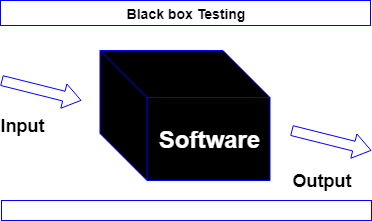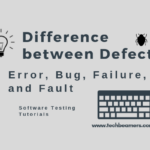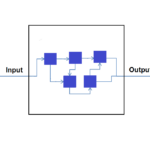When it comes to software testing, Black Box Testing is a strategy that’s all about examining the behavior of a system from the outside. You don’t need to know anything about its inner workings or implementation details – it’s all about what you can observe from the outside. That’s why it’s also called Behavioral Testing.
This approach mostly focuses on examining the functional aspects of a system, but it can also touch on some non-functional areas. Whether you’re a beginner or an experienced tester, understanding Black Box Testing is an essential part of your toolkit.
In this type of testing, the software got treated as a black box which means that it can only be seen, observe, or use from the outside. That’s why this method got famous with names like a Black box or behavioral testing. It helps the testers to reveal the following types of errors:
- Incorrect functions or gaps in functionalities
- User interface issues
- Improper use of data structures or databases
- Usability errors
- Performance bottlenecks
- Unexpected failures at startup or abrupt finish
Black box Testing as per ISTQB
ISTQB represents the International Software Testing Qualifications Board. It is a non-profit Belgium-based organization that contributes to global testing standards and provides testing certifications. Let’s hear how does ISTQB define Black box Testing?
Definition:
It is a testing methodology that could either be functional or non-functional and doesn’t require any reference to the internal structure of the software for execution.
Design Process:
Test design and selection are entirely based upon the functional or non-functional specifications and happen independently without needing any details of the internal structure.
Black box Test Scenario:
A testing professional who is not aware of the internal data structures and implementation of an e-commerce portal examines the different pages by navigating them in a browser, performing actions (open/click links), and checking the results and matching with the expected behavior.
Black box Testing Applies to:
This method touches upon the following areas of manual testing:
1- Integration,
2- System, and
3- Acceptance
As the level goes higher and higher, more becomes the complexity of the box.
Black Box Testing Techniques:
There are a bunch of popular black-box testing methods which a tester can learn to perform.
1. Equivalence Partitioning:
It is a commonly used black box testing technique for designing test cases that suggest dividing data values into right and wrong partitions and picking representational values from each partition as test input data.
2. Boundary Value Analysis:
It is a manual testing design technique that requires the following:
1. Calculation of boundaries for input data values, and
2. Choosing values that are on edge and directly inside/outside of the borders as test data.
3. Cause-Effect Graphing:
It is a simple test design technique that requires distinguishing the cases (input conditions) and outcomes (output conditions), drawing a Cause-Effect Graph, and forming test cases accordingly.
Black Box Testing Pros and Cons:
Pros:
1. Tests take care of the user’s perspective and assist in revealing inconsistencies in the specifications.
2. Tester doesn’t have to know the programming languages or the technologies used for developing the software.
3. Test execution can happen independently of the developers, providing a subjective aspect and eliminating any biases.
4. Test case generation can start once the specifications are in place.
Cons:
1. The test data is small and can only cover limited paths causing parts of the program untested.
2. Test designing is not easy when no clear specifications are available.
3. Tests can be repetitive if the programmer has already got them covered in his unit test cases.
4. Execution in black box testing is somewhat like a soothsayer shutting his eyes while foretelling events.
Looking to upgrade your skills or learn something new? Look no further than our collection of tutorials! From beginners to advanced learners, our tutorials cover a wide range of topics, so you can find something that suits your interests and skill level. So why wait? Come explore and take your skills to the next level today!
- Software Testing – A Step-by-Step Guide
- Top 20 Software Testing Interview Questions for Testers
- White Box Testing – A Practical Guide for All Beginners
- Page Object Model Or Properties File – Which One Should You Use?
- Penetration Testing and Its Types
- Seven Types of Test Automation Frameworks
Thanks for choosing us.









